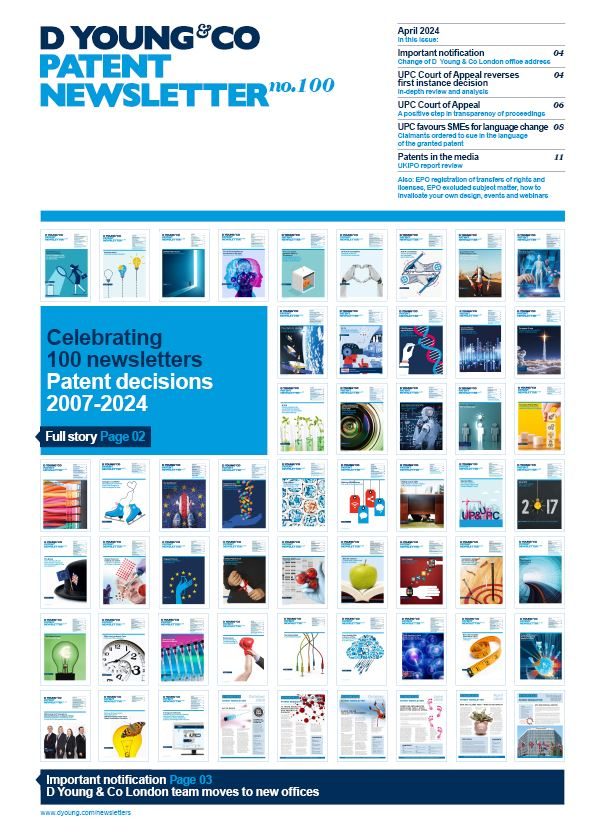CJEU thickens the fog on SPC eligibility
In its latest decision on Supplementary Protection Certificates (SPCs) (C-121/17, Teva and others v Gilead), the Court of Justice of the European Union (CJEU) has issued a ruling which will likely invalidate the SPCs for Gilead’s anti-HIV combination drug Truvada®. However, yet again the CJEU’s reasoning on this matter raises more questions than answers and will create further uncertainty for applicants regarding SPC eligibility – for mono-products as well as combinations.
Background
SPCs are granted under EU legislation for pharmaceuticals and plant protection products which require marketing authorisation (regulatory approval) before they can be marketed in the EU. Under this legislation, SPCs can extend the term of the patent for that product by up to 5 years (with an additional 6 months possible for medicines on which paediatric studies are carried out). SPCs are therefore of immense value to the innovator pharmaceutical industry, as the term of the SPC is often when sales of the product are at peak. Consequently, many SPCs have been litigated in order to speed up entry of generic products into the EU market.
Under Article 3(a) of the medicinal products SPC regulation, one of the criteria for SPC eligibility in the EU is that the product is “protected by a basic patent in force”. The exact meaning of this seemingly simple phrase has been the subject of fierce litigation throughout Europe for a decade, leading to several references asking the CJEU to clarify its meaning.
Despite these multiple references, considerable uncertainty remains about what is required for a product to be “protected” by the basic patent. The only matter on which there appears to be consensus is that the CJEU has rejected an “infringement” test: in other words, it is not sufficient for the product to simply fall within the scope of a claim of the basic patent.
Two tests have emerged from the case law to date:
- The product must be “specified” or “identified” in the claims of the basic patent (Medeva, C-322/10 and subsequent case law).
- The product must reflect “the core inventive advance” of the basic patent (Actavis v Sanofi, C-443/12, and subsequent case law).
In this writer’s opinion, there is an argument that both these tests lack legal basis, as there is nothing in the SPC Regulation which provides legal basis for any additional criteria for a product to be ‘protected’ by a patent, above and beyond the product falling within the claims. Nevertheless, subsequent CJEU decisions have followed this approach and they have become established law.
The case before the CJEU
Gilead markets, under the name Truvada®, an anti-HIV drug which is a combination of two active ingredients, tenofovir disoproxil (‘TD’) and emtricitabine. Gilead’s European patent EP 0 915 894 (‘the basic patent’) discloses and claims TD both generally and specifically. The patent also discloses and claims, generally, combinations with ‘other therapeutic ingredients’, but neither defines the term ‘other therapeutic ingredients’ nor explains what they may be.
After the basic patent was filed, Gilead found that the combination of TD and emtricitabine was particularly effective as an antiretroviral agent. The combination received marketing approval and Gilead sought an SPC for this combination based on the above basic patent. The SPC was granted in 2008, before the CJEU issued its decision in Medeva and the subsequent cases.
Following the expiry of the basic patent, a number of generic companies sought to invalidate the SPC on the grounds it does not meet the criteria of Article 3(a). At first instance before the UK Patents Court, the judge (Mr Justice Arnold) reviewed the CJEU’s decisions in Medeva and subsequent case law in some detail. He decided that the ‘infringement’ test for Article 3(a) had clearly been rejected, concluding that it is not sufficient for the product in question to fall within the scope of the claims of the basic patent - 'something more is required'. He considered the CJEU had still not made it clear what that 'more' is and referred the matter to the CJEU once again.
The CJEU's decision
The wording of the CJEU’s decision on the specific matter of combination SPCs largely follows its previous case law. It decided that combination products can be regarded as ‘protected by the basic patent in force’ even if the combination of active ingredients is not expressly mentioned in the claims of the basic patent, but the claims must ‘relate necessarily and specifically’ to that combination (as the CJEU ruled in its earlier decision HGS v Lilly C-493/12). The CJEU ruled that this test was complied with if, at the filing date (or priority date) of the basic patent:
(a) the combination of those active ingredients must necessarily, in the light of the description and drawings of that patent, fall under ‘the invention covered by that patent’, and
(b) each of those active ingredients must be specifically identifiable, in the light of all the information disclosed by that patent.
Based on this decision, the Truvada® SPC will likely be invalidated by the lower courts, as the basic patent neither identifies emtricitabine nor indicates that combinations are independently inventive.
Comments
Once again the CJEU’s reasoning in this case raises more questions than answers and increases the uncertainty on SPC eligibility in Europe. In particular, some of the reasoning will raise concerns in the innovator pharmaceutical industry, as it could have a wider impact beyond combination products and make SPCs for mono-products more difficult to obtain in future.
Firstly, the CJEU has not made it clear what is meant by "specifically identifiable" for the purposes of determining whether the SPC meets the requirements of Article 3(a). The CJEU indicates that the protection conferred by an SPC should be restricted to the 'technical specifications of the invention' covered by the basic patent, but has not said what is meant by this term.It is still not clear, for example, what degree of ‘specificity’ is required. For example, would this disqualify from SPC protection any basic patent which does not disclose and claim as a species the exact approved product, or is it still sufficient that the patent covers the product in a Markush-type claim or functional claim (as the CJEU decided was permissible in its earlier decision HGS v Lilly C-493/12) but does not disclose or claim it specifically?
It is also not clear what the CJEU means by the product falling under ‘the invention covered by that patent’, if this is something other than what the claims cover – so Arnold J’s question of “what more is required?” has still not been answered. The CJEU may be referring to the previous case law that the product reflect “the core inventive advance” of the patents – to meet this test for combination products, some Patent Offices have asked the applicant to show that the combination (A+B) is inventive over the mono-products A and B.
In some of its reasoning on this decision, the CJEU may be intending a wider purpose - that the SPC must ‘relate to the results of the research claimed under the patent’. This is in line with the objectives of the SPC regulation, which is to encourage pharmaceutical research. The CJEU appear to indicate that results from the research which took place after the filing date or priority date of the basic patent would run contrary to these objectives, and therefore should not be taken into account when assessing SPC eligibility. However, if this reasoning were to be applied more generally, it could disqualify from SPC protection any product which results from research carried out after the filing date of the basic patent in question. This could place in doubt the validity of any SPC based on a patent which is based on early stage research (for example, to identify compounds which bind to a biological target, or a class of compounds generally), but where the specific product which receives approval was not identified until later. As many SPCs are based on such early stage patents, this could be of significant concern to the innovator pharmaceutical industry.
The European Commission is currently reviewing the SPC Regulation generally to decide whether it is fit for purpose and meets its intended objectives. As, in this writer’s opinion, the CJEU has now manifestly shown itself on multiple occasions to be incapable of clarifying the law – partly because of the flaws in the Regulation itself, and partially due to the CJEU’s lack of understanding of patents - a legislative fix may now be the only way which will provide the clarity that both the innovator and generic pharmaceutical industries require on SPC eligibility.

